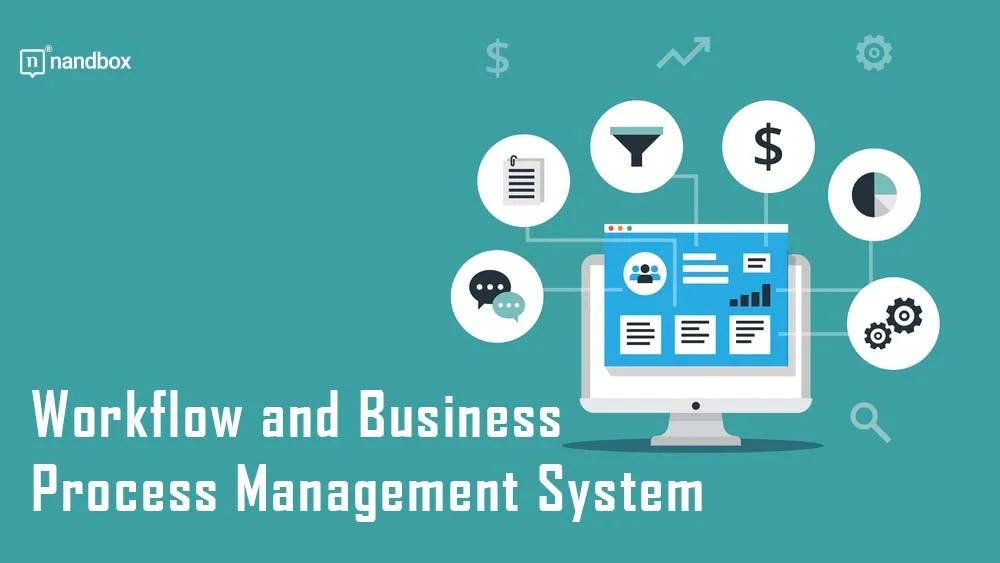The Essential Guide to Business Process Management Systems and Workflow Tools
Thanks to technological advancements and evolved strategies, many business operations are now easier than ever. Back in the day, the burden of repetitive and tedious tasks was a must. This usually reduces the productivity of employees in the organization. However, organizations now have many options to improve productivity and eradicate the burden that was once present. Upon looking for tools, people come across two very popular ones that are widely used now. These would be workflow and business process management systems. To learn more about the two strategies and tools that can help you streamline your business operations, follow this article!
What Are Business Process Management Systems
Let us start with business project management systems. Business process management, or BPM, is a very important approach that helps businesses achieve their goals and objectives seamlessly. It is the process of managing, controlling, and monitoring a bundle of day-to-day organizational activities. These activities need to be executed in order to reach organizational goals and fully achieve them. Business process management is not by any means limited to just one department or section in the organization; it includes every part of it.
Asset management software is one of the ways BPM can be improved. It enables businesses to track, monitor, and manage assets easily from a single platform, streamlining daily business operations. Such software not only helps businesses optimize the use of assets but enhances their overall utilization as well.
The process of going through these processes daily for employees can get a bit boring over time. Imagine you are doing the same task every day; the productivity and eagerness will, for sure, die down a bit. If there is anything that the business process management systems or tools did, it was that they were able to streamline all these repetitive tasks. The BPM tools came as a lifesaver for all organizations. As they were able to automate all these operations, allow employees to focus more on advanced and new operations, and elevate productivity.
BPM typically involves the use of specialized software tools to automate and monitor processes, as well as provide real-time data and analytics to help organizations make informed decisions. Any BPM application must also offer a variety of configuration options. As not all organizations have the same fields, requirements, capacities, etc. Therefore, they should enable each organization to personalize the tool according to its needs.
Best Business Project Management Systems Tools
KissFlow
Kissflow is a cloud-based BPM application that enables organizations to automate and streamline their business processes. It provides a drag-and-drop interface that makes it simple to construct custom operations and tasks without any knowledge of coding. Kissflow includes additional features such as analytics and reporting, task management, and collaboration tools to help teams work more effectively. Kissflow is a fantastic option for small and medium-sized businesses seeking to enhance their processes due to its user-friendly interface and reasonable pricing scheme.
Process Street
Process Street is a powerful business process management tool that facilitates the creation and management of business operations for organizations. It provides a straightforward and intuitive interface that facilitates the creation of customized tasks, checklists, and forms. In addition to automation, collaboration tools, and analytic capabilities, Process Street includes additional features that help teams perform and work more efficiently. Process Street is a fantastic choice for businesses of all sizes, especially small ones, who are seeking to improve productivity across the whole organization.
Appian
Appian is an all-inclusive business process management solution that offers a variety of features to help businesses streamline processes. It enables the creation of custom workflows, task automation, and real-time team progress updates. The platform also features robust analytics tools that enable you to monitor performance and identify areas for improvement. This platform is a great option for businesses seeking a comprehensive BPM solution that can handle all of their process management needs to accomplish all their organizational goals.
What Is Workflow Automation
Usually, people tend to confuse workflow automation with BPM, so let us thoroughly define workflow automation to avoid this confusion. Workflow automation also aims to streamline operations; however, it does a lot on the individual level. Workflow automation is the process of monitoring the steps that take place within one workflow or one process. It is not necessarily present across the whole organization; it can be specified for one employee or one department. We can sum it up by saying that it is the automation of a series of steps to accomplish only one task.
For instance, to transform one set of data from a paper format into a digital format, a data entry clerk has many steps to accomplish. Such as data input, assembly, validation, etc. In this case, workflow automation steps in and helps completely automate one or more of these processes or steps. Workflow automation can be implemented using a variety of tools, including software applications, robotic process automation (RPA), and artificial intelligence (AI) technologies, which expand its functions.
Workflow automation is a vital tool and strategy for all organizations now. As it reduces any chance of errors during repetitive tasks and improves employees’ productivity to a great extent
Best Workflow Automation Tools
Zapier

Needless to say, Zapier is a renowned workflow automation tool that is employed by organizations of all sizes. What makes Zapier very special is that it is very easy to use and doesn’t require magnificent skills to understand and employ. Additionally, it has a very intuitive and interactive user interface that improves the experience even more. Zapier allows employees to create an automated workflow, no matter how long or complex it is. These automated workflow processes are called Zaps. For instance, you can create a zap that automates sending a specific email to customers, or you can create another to send push notifications, and so on. Additionally, Napier has a rich library of integrations that allows you to integrate any third-party application into the tool.
Integrify
Integrify is a workflow automation tool that enables you to automate repetitive tasks and create custom workflows. With Integrify, you can generate forms, assign tasks to various team members and employees, and monitor and analyze progress. Integrify also provides templates for common workflows, such as employee onboarding and IT support requests. In addition, it integrates with well-known applications such as Salesforce, Dropbox, and Google Drive.
Monday.com
Monday.com is a well-known workflow automation tool with a visual and flexible interface for managing tasks and projects. The platform enables the creation of boards for various projects and repetitive tasks, the assignment of duties to team members, the setting of deadlines, and the real-time monitoring of progress. You can also consult a monday.com expert to help you navigate the whole process and maximize business efficiency. The tool also integrates with popular applications such as Slack, and Google Drive. This platform is an excellent option for small businesses seeking a flexible and user-friendly workflow automation solution.
Workflow and Business Process Management Systems: Key Differences
While BPM and workflow automation are both tools for streamlining business processes, they differ in significant ways. For instance, workflow automation concentrates on improving individual tasks within processes. Whereas BPM focuses on optimizing business processes within an entire organization. BPM involves the analysis and redesign of processes to improve their effectiveness and efficiency, whereas workflow automation automates repetitive or manual tasks to reduce errors and increase productivity. Moreover, BPM frequently requires collaboration and communication between various departments or constituents, whereas workflow automation is typically implemented within a single team.
Additionally, BPM allows for more customization and flexibility, due to the fact that it involves the whole organization and all departments. The inclusion of customization helps organizations set clear goals and analyze specific operations and parts. Whereas workflow automation is a bit limited to the steps required to accomplish the specified task. So, you won’t usually find many customization options like the ones in BPM.
Which Is Better to Use for Businesses Between Workflow and Business Process Management Systems
The decision to choose which is right for your business totally depends on you and your organization. Whether you choose BPM or workflow automation depends on your organization’s unique needs and requirements. If you’re seeking to optimize entire processes and improve departmental and team collaboration, BPM may be the better option. Alternatively, if you wish to automate repetitive or manual tasks within a single department or team to remove the burden and improve productivity, workflow automation may be the more efficient choice. Before deciding which tool and strategy to implement, it is vital to carefully evaluate your business’s processes and objectives.
Final Thoughts
The more technology and tools get advanced, the more we will witness great improvement in all types of business operations and productivity across all organizations. The fact that no tasks that once took hours and days can now be done automatically in the blink of an eye is astonishing and mind-blowing. The presence of workflow and business process management systems, as well as many tools like AWS, is vital for all businesses. However, it doesn’t erase the fact that there are many other tools and strategies that can also enhance business operations. That is why a business’s first and foremost goal is to keep researching and be on the same page with the latest advancements and tools. So, in order to ensure your organization’s success and prosperity, always keep an eye on all the new tools that might help you take your business to the next level.







